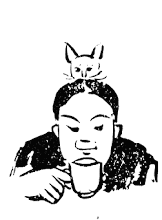The Black Jacobins/ 壮美的史笔——《黑色的雅各宾党:杜桑•卢维图尔和海地革命》
我觉得老一辈黑人历史学家C.L.R. James的学养和文笔是第一流的。他笔下的历史如同古典戏剧一样壮美。不仅如此,在历史舞台上他描绘的主角再也不是帝王将相,而是“愚昧落后”、饱受非人待遇的黑奴。他的文笔是古典的,他的洞察力是现代的。两相结合,使得他的风格超越了塔西佗 (Gaius Cornelius Tacitus, 55?-117? ) 和吉朋 (Edward Gibbon, 1737-1794) 曾经建立的史学典范。 对他来说,殖民地的黑人为人类创造了法国大革命之后的新解放史;貌似高贵实则残暴的殖民者不配在历史中享受尊严。
C.L.R. James, The Black Jacobins: Toussaint L’Ouverture and the San Domingo Revolution
Eh! Eh! Bomba! Heu! Heu!
Canga, bafio té!
Canga, mouné de lé !
Canga, do ki la !
Canga, do ki la !
Canga, li !
The Slaves worked on the land, and, like revolutionary peasants everywhere, they aimed at the extermination of their oppressors. But working and living together in gangs of hundreds on the huge sugar-factories which covered the North Plain, they were closer to a modern proletariat than any group of workers in existence at the time, and the rising was, therefore, a thoroughly prepared and organized mass movement. By hard experience they had learnt that isolated efforts were doomed to failure, and in the early months of 1791 in and around Le Cap they were organizing for revolution. Voodoo was the medium of the conspiracy. In spite of all prohibitions, the slaves traveled miles to sing and dance and practice the rites and talk; and now, since the revolution, to hear the political news and make their plans. Boukman, a Papaloi or High Priest, a gigantic Negro, was the leader. He was headman of a plantation and followed the political situation both among the whites and among the Mulattoes. By the end of July 1791 the blacks in and around Le Cap were ready and waiting. The plan was conceived on a massive scale and they aimed at exterminating the whites and taking the colony for themselves. There were perhaps 12,000 slaves in Le Cap, 6,000 of them men. One night the slaves in the suburbs and outskirts of Le Cap were to fire the plantations. At this signal the slaves in the town would massacre the whites and the slaves on the plain would complete the destruction. They had traveled a long, long way since the grandiose poisoning schemes of Mackandal.
…
On the night of the 22nd a tropical storm ranged, with lightning and gusts of wind and heavy showers of rain. Carrying torches to light their way, the leaders of the revolt met in an open space in the thick forests of the Morne Rouge, a mountain overlooking Le Cap. There Boukman gave the last instructions and, after Voodo incantations and the sucking of the blood of a stuck pig, he stimulated his followers by a prayer spoken in creole, which, like so much spoken on such occasions, has remained. “The god who created the sum which gives us light, who rouses the waves and rules the storm, though hidden in the clouds, he watches us. He sees all that the white man does. The god of the white man inspires him with crime, but our god calls upon us to do good works. Our god who is good to us orders us to revenge our wrongs. He will direct our arms and aid us. Throw away the symbol of the god of the whites who has so often caused us to weep, and listen to the voice of liberty, which speaks in the hearts of us all.”
The symbol of the god of the whites was the cross which, as Catholics, they wore round their necks.
...


没有评论:
发表评论